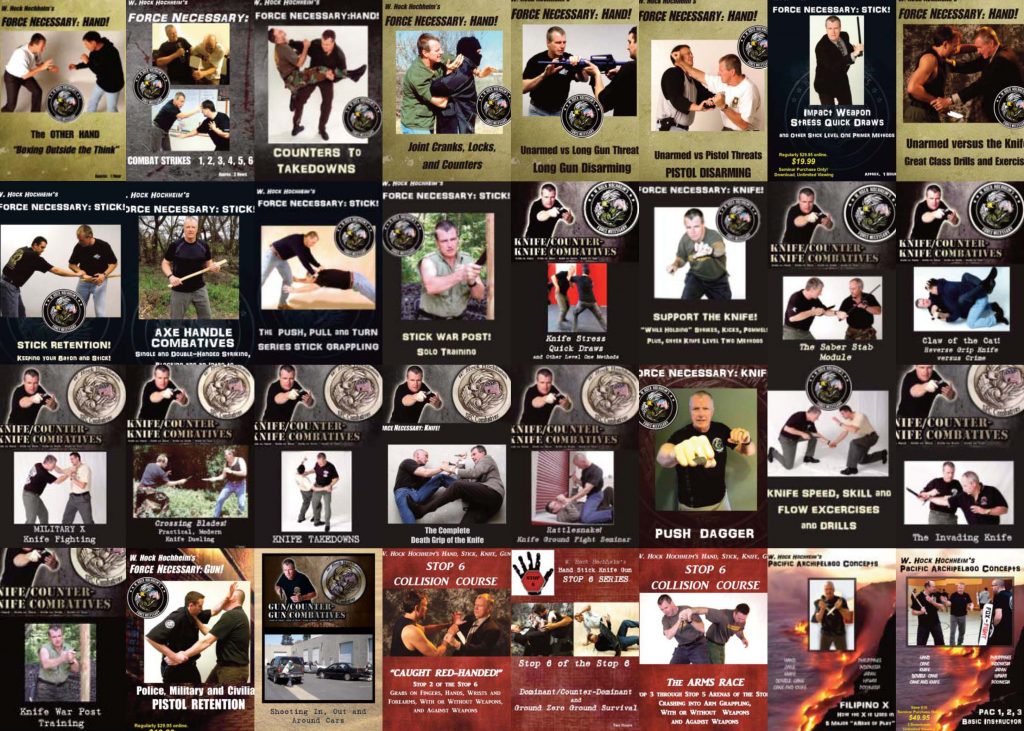Force Necessary: Hand Level 6 Strike: The Elbow Strike
Yes, the popular elbow strike is number 6 in the strike list. Not that it is 6th in importance, it’s just that everything cannot be number 1, and things need to be stretched out for digestion. Remember our mission is not to create champion kick or Thai boxers, but develop self defense, survival skills.
The elbows are very close quarters strikes. Sport applications can easily be confused with survival applications by naive instructors within the spinning worlds of self defense and sport. I have heard various self defense system instructors regurgitate a lot of sport doctrine. Survivorialist borrow (some like to say “steal”) from sports and shouldn’t automatically, completely replicate them. So what’s different?
Cutting AND Smashing? Take for example the generic instruction that the elbow is used for both cutting and smashing. Suffice to say that the best smashing impact deliveries are the striking surfaces just a 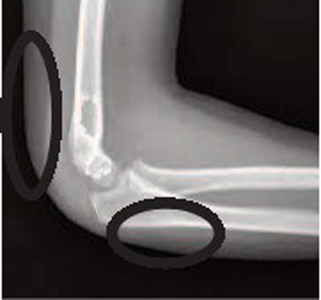
The Striking Version. Many experts suggest incorporating your big bones as much as possible. You might say, “elbow-area” striking for self defense and elbow tip striking possibilities for sports cutting. It’s more than semantics.
The Cutting Version. Hitting with the very tip of the elbow may cause 
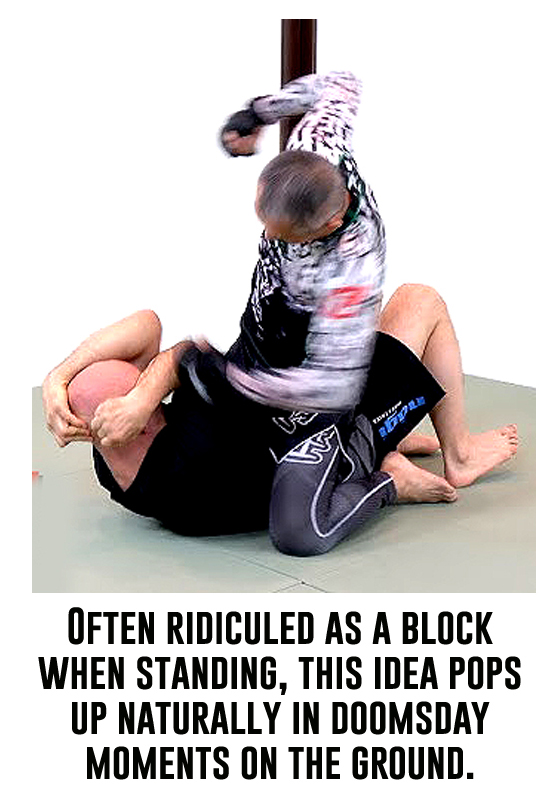
Better to Give than Receive. When in elbow delivery range, you are in elbow reception range, a common Thai Boxing theme. Where does your support hand and arm go? Inexperienced practitioners, especially 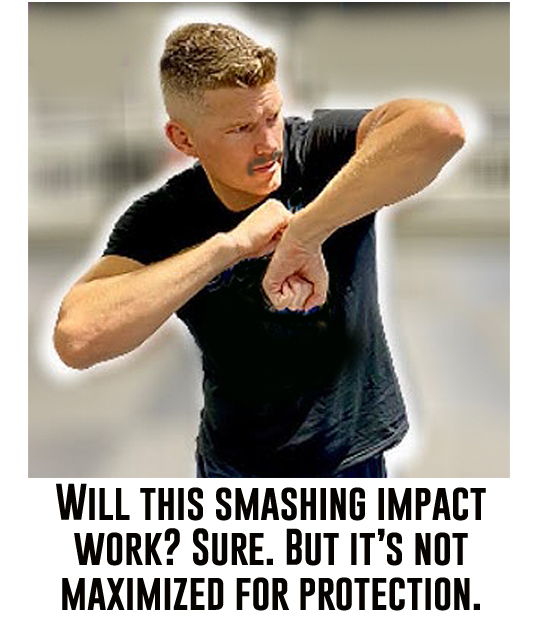
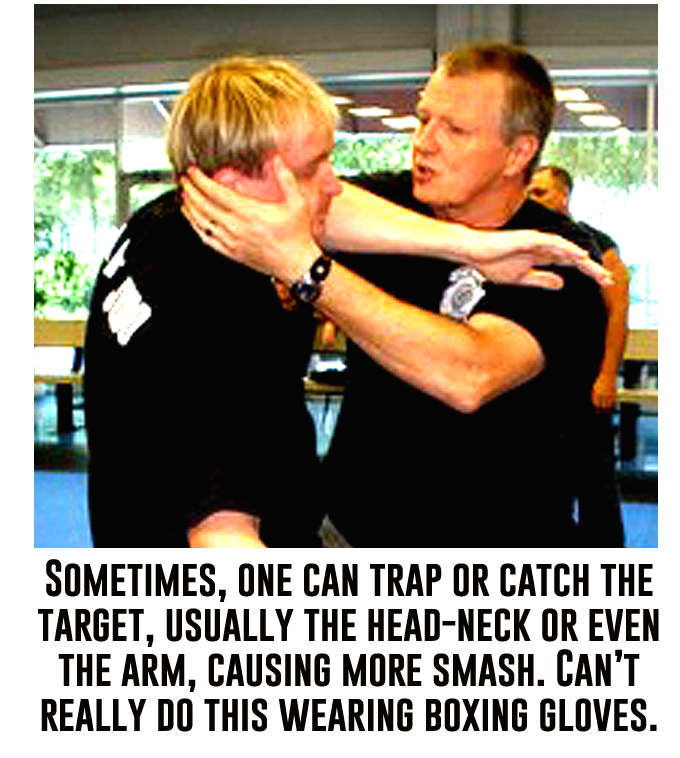
Note: Thai boxers often deliver horizontal and near horizontal incoming elbow strikes with that arm’s wrist bent and hand pointing down. This allows for the deeper range and penetration of the strike, whereas the straight wrist and hand inhibits that deeper strike because your hand hits your torso. In big gloved Thai fights, this hand position is hard to observe. The bent wrist might not matter much. This is just what I was taught in the Master Chai Sirisute Thai Boxing system. We report. You decide.
The Basic Elbow Smash List: The old saying is, “if you have a good hook (punch) you have a good elbow (and vice-versa), as the body dynamics are somewhat similar. The combinations seem endless and class time should be spent working on them. Do these standing, kneeling and on the ground (as in top, bottom, right side, left side), all where feasible.
Horizontal or mostly horizontal elbows.
– right traveling left.
– left traveling right.
Vertical or mostly vertical elbows.
– mostly downward direction, including diagnials.
– mostly upward direction, including diagnials.
Thrusting elbow.
– to the front, sides and back.
Spinning elbow.
– mostly horizontal.
– 1/4 or 1/2 or 360 spins. Requires some foot and torso set up that at times can be similar to spinning kicks.
– should you feel uncomfortable spinning, you still need to see them used on you and defend against it.
This Level 6 Elbow Module includes all this and elbow scenarios, tricks and skill drills, all too much to to list here. Level 6 also includes the Level 6 kick – the Thrust Kick Module, the Level 6 Emergency Medical Module, and the 6th Stop of the Stop 6 Program which is the survival ground fighting module. Ask for the new and improved Force Necessary: Level 6 Requirements Outline. It’s free and available after 15 February, 2024.
See all the free full training films on Hock’s Combatives TV Channel, click here.
